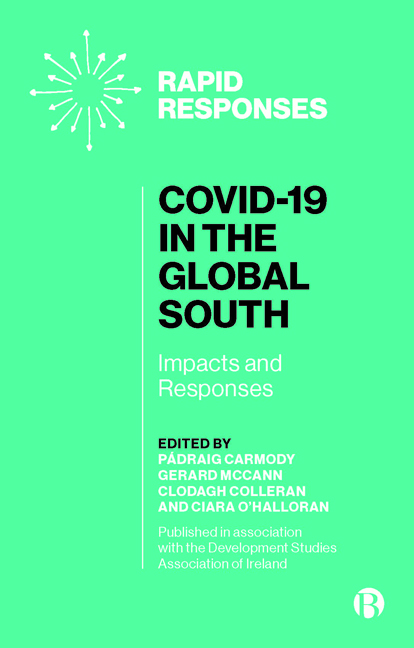13 - The Economics of COVID-19 in Italy and Lessons for Africa
Published online by Cambridge University Press: 23 March 2021
Summary
In early 2020, Italy was badly hit by coronavirus. For several weeks it was the epicentre of the pandemic in Europe. It was then the first liberal democracy to implement restrictive measures (the ‘lockdown’) to fight the spread of the virus, and also the first to see positive results from it. As the situation improved week after week, it became possible to draw some lessons from the Italian case for countries which are still suffering spikes in cases. This chapter will look at the economic consequences of, and responses to, the virus, trying to shed a light on the analogies and differences with African countries in particular. By leveraging Italy's case, the ultimate aim of this chapter is to provide a compass to navigate through the complexities of this multi-faceted crisis.
There is a general belief about a coronavirus trade-off between economics and health (livelihood or lives?). The truth is that the lockdown has different meanings and impacts in different contexts, and lockdown is not necessarily the only solution, nor the best – depending on available equipment, the spread of the virus, and other factors (the now famous three T’s: testing, tracking, treatment). Equally, unlocking does not immediately nor necessarily spur economic recovery as social distancing measures and, in general, uncertainty over the future continue to limit spending and investment (Sorrentino, 2020). This is why the study of specific cases with their own specific conditions is so important.
Dealing with it
To begin with, it would be useful to look at a chronology on how the virus spread in Italy. In January 2020 there were the first two cases in the country (two Chinese tourists, who were quickly isolated and treated). A six-month state of emergency was then declared by the government one day later (in May it was prolonged until the end of 2020). The Italian ‘patient zero’ was reported on 21 February in Codogno, Lombardy. The first so-called ‘red zones’, where quarantine was enforced, were established a few days later. The lockdown (so-called Phase 1) started 9 March 2020. It ended on 4 May (so-called Phase 2) when a partial unlocking started. On 1 May, most businesses were permitted to reopen. By the end of July 2020, the total number of cases was around 240,000, with around 35,000 deaths.
- Type
- Chapter
- Information
- COVID-19 in the Global SouthImpacts and Responses, pp. 139 - 148Publisher: Bristol University PressPrint publication year: 2020



